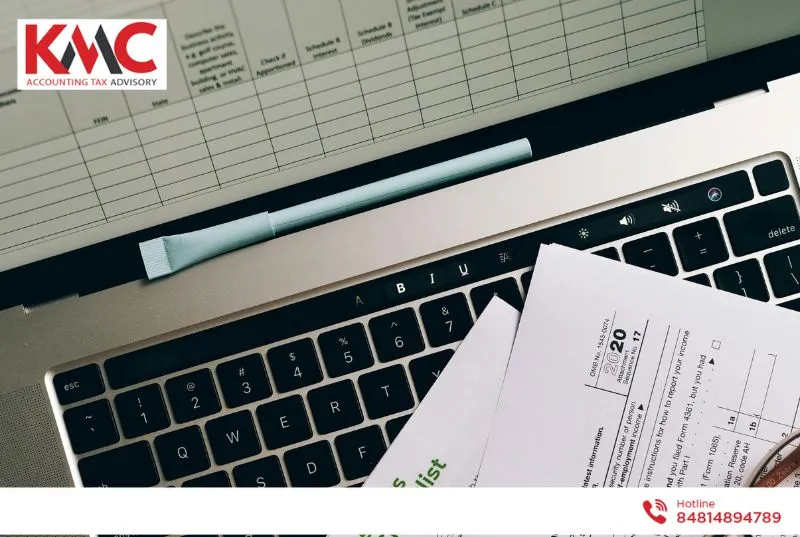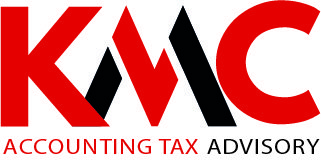The end of the fiscal year is a challenging period for accountants and business owners—including foreign-invested enterprises (FDI)—as they must complete and print all accounting books for tax finalization and recordkeeping purposes.In this article, KMC provides a detailed checklist of the types of accounting books that need to be prepared, along with step-by-step instructions on how to print and organize them properly, enabling you to compile a complete and accurate year-end accounting record by yourself.
The Importance of Printing Complete Accounting Books
Compliance with Legal and Audit Requirements

FDI enterprises operating in Vietnam are subject to strict accounting and tax regulations under local law. Printing accounting books completely, clearly, and in accordance with standards allows enterprises to readily provide documentation to auditing firms or tax authorities when required.
This not only helps avoid potential administrative penalties but also enhances the credibility and transparency of your business in the eyes of regulators and business partners.
Ensuring Clarity and Accuracy of Information
All financial transactions of the company are recorded in the accounting books in a detailed and systematic manner. This facilitates easy review and identification of any potential errors when necessary.
Maintaining printed records enables quick corrections and ensures that all financial data remains accurate and traceable.
Supporting Year-End Financial Reporting
Accounting books serve as the foundation for preparing key financial statements such as the Balance Sheet, Income Statement, and Cash Flow Statement.
Printing these records helps accountants consolidate data more efficiently and accurately, providing a reliable basis for management to make informed strategic decisions.
List of Accounting Books Required to Be Printed at Year-End
General Accounting Books

Journal–Ledger, Voucher Journal, or Recording Voucher Method.
Below are the types of books that must be printed corresponding to each bookkeeping form:
- General Journal (if using the General Journal method)
- Journal–Ledger (if using the Journal–Ledger method)
- Voucher Journals No. 7–8 (if using the Voucher Journal method)
- Recording Vouchers (if using the Recording Voucher method)
Tip: Before printing, always check which bookkeeping method your company applies to ensure accuracy and avoid unnecessary printing that wastes paper and ink.
General Ledgers of Accounts
This section is based entirely on the Balance Sheet accounts of the fiscal year.
The number of General Ledgers to be printed must correspond to the number of accounts with transactions during the year.
Common examples include: Account 111 (Cash), Account 112 (Bank Deposits), Account 131 (Accounts Receivable from Customers) and other accounts as applicable
Subsidiary Ledgers of Accounts
If the enterprise has related transactions, all subsidiary ledgers must also be printed and retained for proper documentation.
Common subsidiary ledgers include:
- Cash: Cash Receipts Journal, Cash Disbursements Journal, Cash Book
- Bank Deposits: Detailed Bank Deposit Ledger (attached with monthly bank statements)
- Accounts Receivable / Payable: Detailed Ledger of Customer Receivables, Detailed Ledger of Supplier Payables
- Fixed Assets (FA): Summary of Fixed Asset Movements, Fixed Asset Depreciation Schedule
- Tools and Equipment (T&E): Summary of Tool/Equipment Movements, Allocation Schedule for Tools and Equipment
- Materials and Inventory: Inventory Cards for Raw Materials and Finished Goods, Summary of Inventory Inflows – Outflows – Ending Balances
- Payroll: Monthly Timesheets, Monthly Payroll Sheets
Practical Guidance on Printing and Finalizing Accounting Books in Compliance with Standards
Preparation and Printing from Accounting Software

First, ensure that all accounting data have been fully recorded, verified, and stored within a professional accounting software system.
Once the data are complete and accurate, access the “Reports” or “Print Accounting Books” section of the software, select the types of books required for year-end printing, and proceed to print.
Ensure that each printed book includes all required columns such as voucher number, date, description, amount, and debit/credit account codes.
If available, select the option “Print in accordance with Vietnamese Accounting Standards (VAS)” to ensure compliance with Circular No. 200/2014/TT-BTC and other relevant regulations.
Tips:
- Use Times New Roman or Arial font, size 12–14, for readability; set margins of at least 2 cm on each side to prevent content truncation.
- For large print quantities, print a few sample pages first to avoid mass printing errors.
- Use a laser printer for better print quality and durability.
- The A4 paper size is the standard for most accounting books due to ease of filing and compliance. For detailed subsidiary ledgers, A3 landscape may be used to avoid page breaks, while A5 should be reserved only for small notebooks or summaries. For FDI enterprises, A4 remains the most compliant and practical format.
Organizing Books Before Binding
This step is essential to ensure quick and convenient document retrieval during audits or inspections.
There are two common organization methods, depending on the company’s scale and volume of accounting books.
If the company has a small number of records, you may combine related documents for efficiency.
If the company maintains a large volume of books, grouping by month or quarter will help manage and reference documents more effectively.
Method 1: Grouping by Document Set for Easier Review
Combined Sets: Group related documents together.
Quarterly tax declarations: VAT, CIT, PIT, MB, etc., compiled from Quarter 1 to Quarter 4.
- Input invoices: Arrange chronologically.
- For invoices under VND 20 million paid in cash: attach payment vouchers and goods receipt notes.
- For invoices over VND 20 million paid via bank transfer: attach goods receipt notes, photocopies of bank transfer slips, and accounting vouchers.
- Output invoices: Arrange chronologically.
- For cash receipts: attach invoice, receipt voucher, and goods delivery note.
- For bank transfers: attach invoice, delivery note, contract, and photocopy of bank credit advice.
Separate Sets: Keep independently for easier management.
- Bank documents
- Internal goods issue vouchers
- Allocation tables, depreciation schedules, inventory movement reports
For these types, combine into a single volume if few, or divide by month if numerous.
Method 2: Chronological Arrangement (Logical Order from Beginning to End of the Year)
Suggested order:
- Quarterly tax declarations: VAT, PIT, MB, BC26 invoice usage reports, financial statements, etc., arranged by month (1–12) or by quarter.
- Input invoices: Arranged chronologically according to tax declarations, organized monthly/quarterly.
- Original invoices numbered sequentially as per the input VAT list; photocopies attached with payment vouchers.
- Output invoices: Similarly, arranged chronologically by date and organized monthly/quarterly.
- Payment vouchers: Attach related invoices, goods receipt notes, and contracts. Combine 12 months into one volume if few, or prepare one per month if many.
- Receipt vouchers: Combine 12 months into one volume if few, or one per month if many.
- Bank documents: Arrange according to bank statements (debit/credit notes, payment orders, tax payment receipts). Combine 12 months into one or one per month, depending on volume.
- Goods issue vouchers: Combine 12 months into one volume if few, or one per month if many.
- Allocation tables, depreciation schedules, and inventory movement reports (accounts 142, 242, 214, 152): Combine full 12 months.
- Accounting vouchers: Combine all 12 months if few, or prepare monthly binders if many.
Binding the Accounting Books
After organizing everything, it’s time to bind the books to make them look more professional. For binding specifications, use hard covers for main books such as the general ledger and financial statements to prevent damage, and soft covers for supplementary books such as invoices and payment vouchers to save costs. Secure them with staples or glue binding. However, if you may need to add more pages later, use spiral binding instead.
On the cover, clearly state the title of the book (for example: “Detailed Ledger of Input Invoices for 2025”), the company name, the fiscal year, and the preparer’s signature.
Page Numbering and Page Sealing
Number the pages consecutively from 1 to the end. Place the page numbers either at the bottom right corner or in the center.
Use page seals (or red thread binding) between pages to prevent replacement or tampering. Each seal must bear the company’s stamp and the signature of an authorized person (chief accountant or director).
Valid Signing and Stamping Procedure
The final step is to legalize the accounting books. Doing this properly will help you feel confident during tax inspections.
Signing
Preparer (Accountant): Signs each original voucher.
Chief Accountant: Signs to certify the entire set of books.
Director or Legal Representative: Signs at the end of the book, especially for financial statements and tax declarations.
Note: Sign using blue or black ink, and clearly state the date.
Stamping
According to regulations, accounting books must bear the company’s red seal to prove validity (as provided in Decree No. 123/2020/NĐ-CP on e-invoices and accounting documents). Therefore, apply the official company round seal, ensuring that the stamp is clear and not blurred.
For FDI enterprises, printing and completing accounting books properly is crucial not only for the Vietnamese tax authorities but also for reporting to the parent company. If your company does not have sufficient in-house capacity to prepare a complete and professional set of accounting books, consider partnering with a reputable outsourced accounting service provider such as KMC.
With deep expertise and knowledge of both accounting systems, we help you optimize costs while ensuring absolute legal compliance and security.

